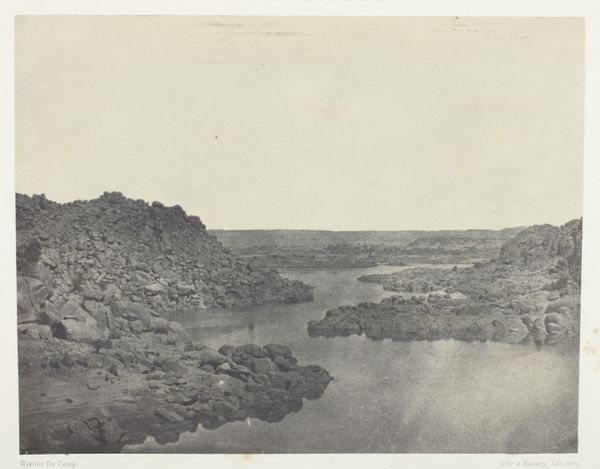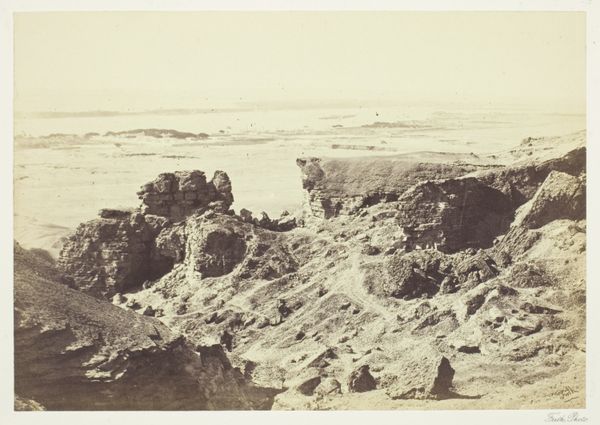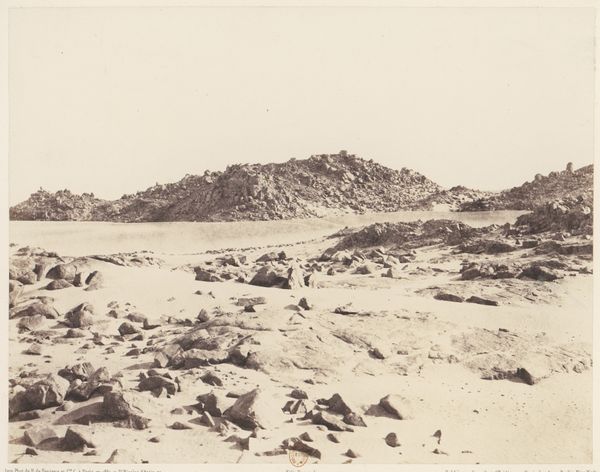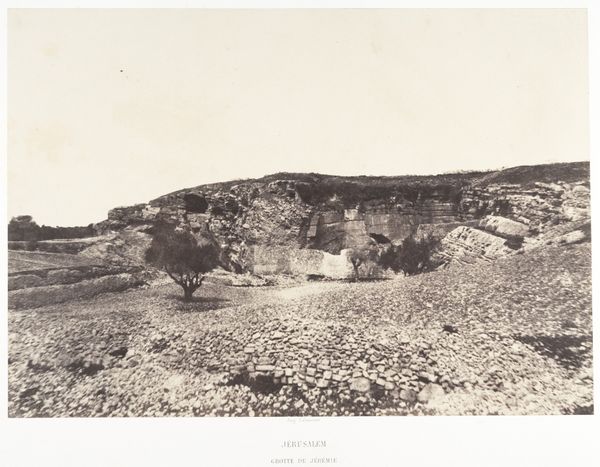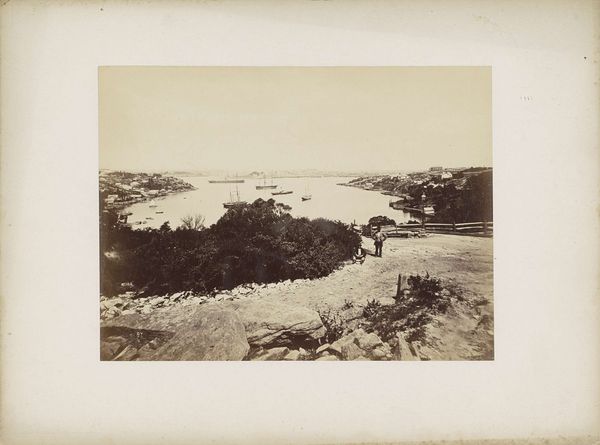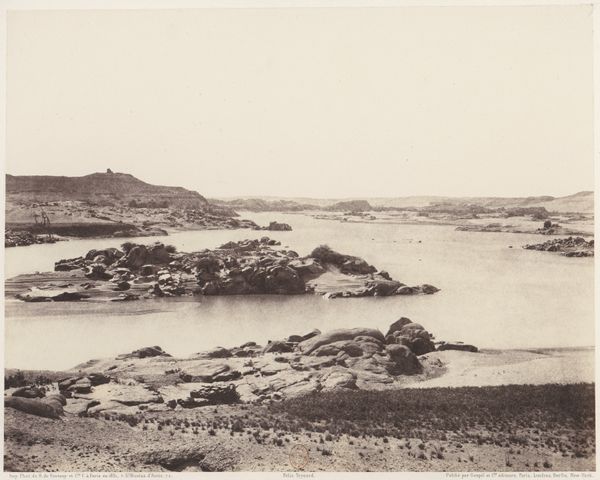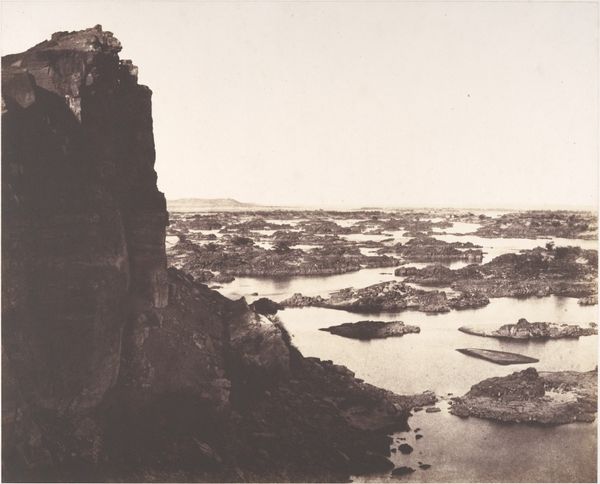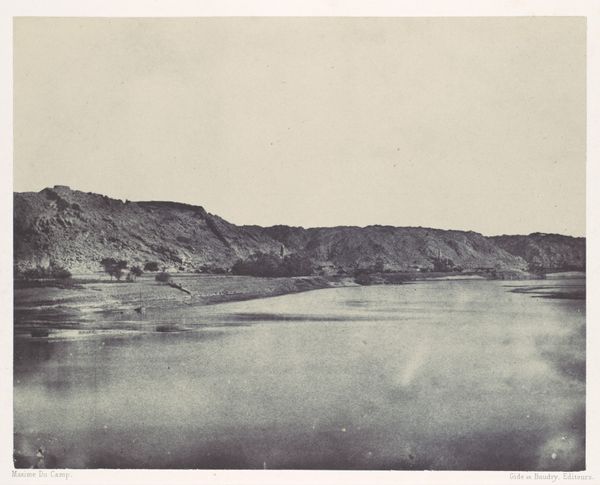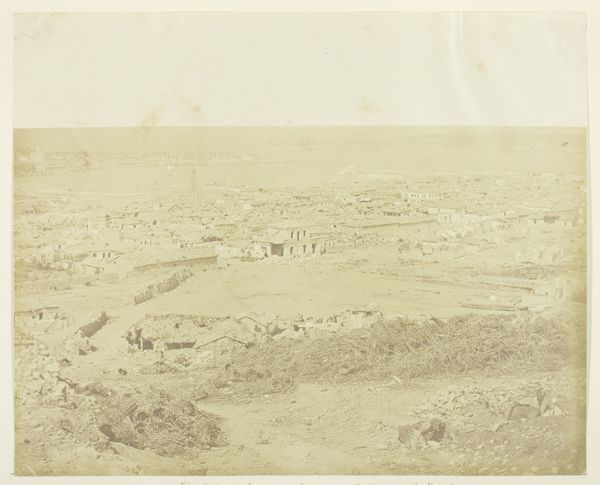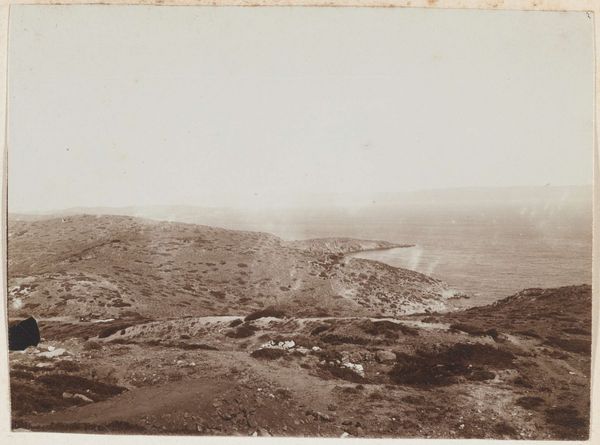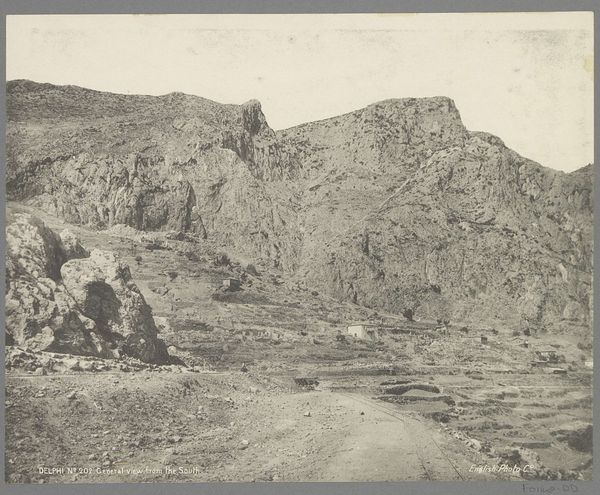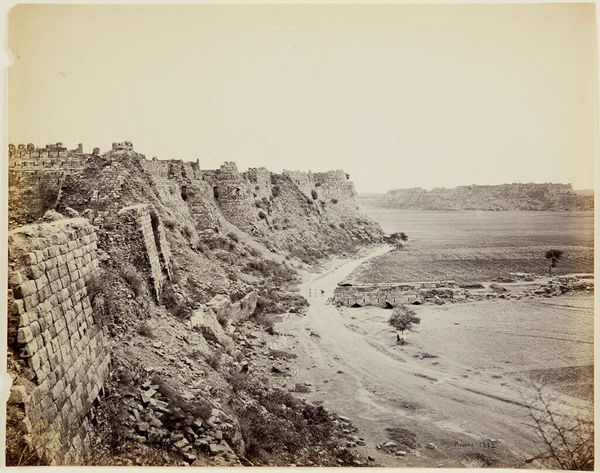
photography, gelatin-silver-print
#
organic shape
#
landscape
#
photography
#
romanticism
#
gelatin-silver-print
#
realism
Copyright: Public Domain
This photograph, "Nubie. Vue Cavalière de la Seconde Cataracte" was taken by Maxime Du Camp sometime in the mid-19th century, using the salted paper process. The photographic print, made by placing a negative on paper treated with silver salts and exposing it to light, speaks to the early innovations in image-making. Notice the textures and tones achieved through this alchemical process, quite different from the hyper-realism of modern digital photography. Photography in the 19th century was more than just documentation. It was a technology used to map new territories and further colonial agendas. The careful composition of rocks and water in Du Camp's image is not neutral, but rather, charged with the power dynamics of exploration and representation. The making of this photograph would have been a laborious task, involving chemical expertise, bulky equipment, and extended periods of time to capture a single image. Considering these images in terms of craft and labor can reveal the complex social and political context of their production.
Comments
No comments
Be the first to comment and join the conversation on the ultimate creative platform.
